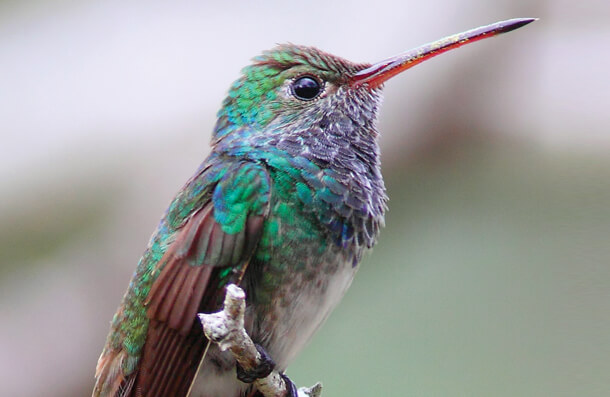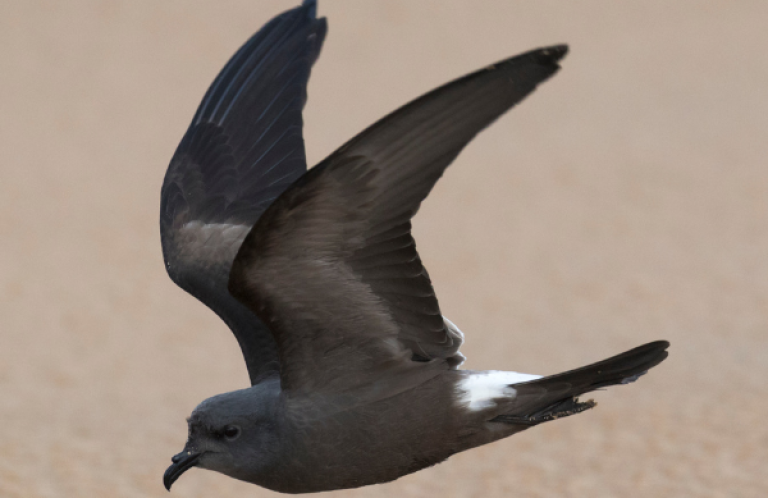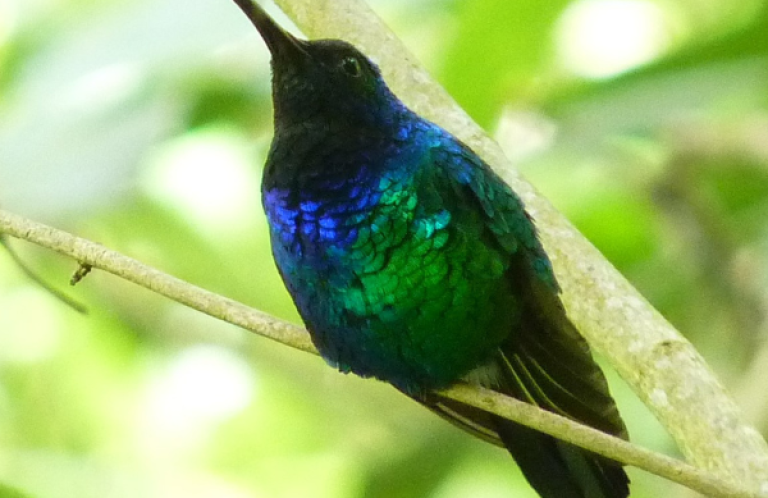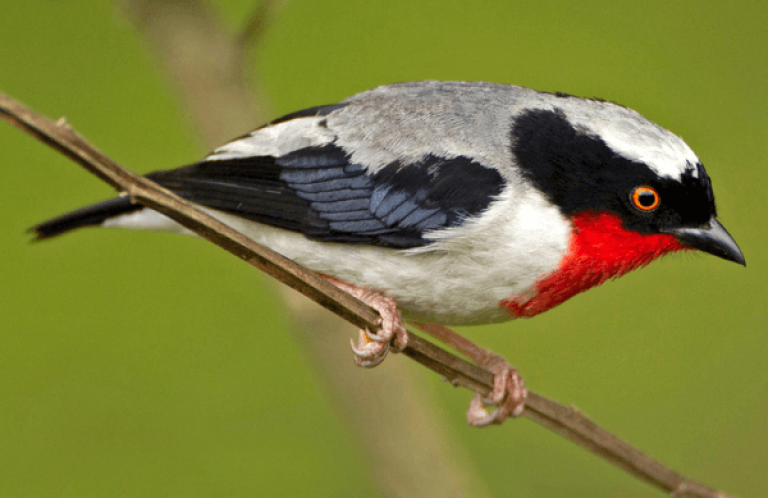Efforts to Save Rare Honduran Hummingbird Result in New Reserve, Conservation Partnerships with Ranchers
Contact: Robert Johns, 202 888 7472, Email

Honduran Emerald, Greg Homel/Natural Elements Productions
(Washington, D.C., August 24, 2015) The future looks a little brighter for a rare hummingbird that resides only in Honduras, thanks to efforts by La Asociación de Investigación para el Desarrollo Ecológico y Socio Económico (ASIDE), American Bird Conservancy (ABC), and other groups.
The bird, the Honduran Emerald, features iridescent blue, green, and turquoise colors. But its most notable feature is its rarity: The species went unrecorded for almost 40 years, from 1950 to 1988, and is listed as Endangered on the IUCN Red List of Threatened Species.
Now, the rare hummingbird will benefit from the protection of 147 acres in Honduras' Agalta Valley. The property belongs to the San Esteban municipality – a first for this community – and has been officially designated as the El Ciruelo Wildlife Refuge by the Honduran Forestry Department.
“We are still in the early stages of this project in the Agalta Valley but are thrilled by the early conservation success that the new El Ciruelo Wildlife Refuge represents,” said John Tschirky, who manages this project for ABC.
ABC and ASIDE are working with the municipality to develop a strategy for management of the refuge and critical next steps, such as installing fencing and signage; establishing visitor trails and picnic areas; and conducting additional outreach with local landowners about the role of the new refuge.
(See the bird in amazing slow motion.)
Stemming the Loss of Honduran Forests
Cattle ranching is the dominant land use in the Agalta Valley of eastern Honduras and has resulted in a dramatic and rapid conversion of dry forest to grasslands. However, ranches still contain isolated patches of forest that provide needed shade for the cattle as well as hardwoods used for fence posts and charcoal.
Cattle producers here suffer from increasing summer temperatures, declining rainfall, and soil exhaustion which reduce the quantity and quality of milk from their cows. Many ranchers compensate for this by clearing forest for additional pasture, resulting in 10 percent annual forest conversion to pasture. This trend will likely continue without additional and immediate conservation measures.
To secure remaining forests, ABC and ASIDE are working to develop a Payment for Ecosystem Services program in the Agalta Valley to incentivize private landowners to maintain and even improve tropical dry forests on their lands.
Conservation of these forests would benefit the Honduran Emerald, declining neotropical migratory birds such as the Wood Thrush and Golden-winged Warbler, as well as many rare plants, reptiles, and other wildlife.
What's Next: Incentives for Bird Conservation
ASIDE, with ABC's support, has completed a socio-economic evaluation of landowners in the Agalta Valley to identify the incentives desired and needed by landowners to conserve and restore their lands.
To date, the ASIDE team has interviewed 18 landowners and evaluated their properties, which encompass a total of 3,230 acres (1,307 hectares) of remaining dry forest habitat critical to the Honduran Emerald. All but one expressed an interest in receiving incentives in exchange for conserving forests on their lands. Incentives may include cash payments, technical assistance (such as implementing silvipasture techniques and installing irrigation systems), equipment (fencing), and other forms of help.
This work has been made possible through the support of the Biodiversity and Ecosystem Services Program and the Environmental Safeguards Group of the Inter-American Development Bank and David Davidson.
Identifying the Honduran Emerald's Habitat Needs
ASIDE has also completed an ecological evaluation to provide an ecosystem service baseline of the remaining dry forest areas that are most crucial to the hummingbird. This baseline can be used to negotiate goals to maintain or improve these ecosystem services with landowners should an incentive payment scheme be established that requires evaluation of performance against the baseline. Funds for such a program are currently being sought.
To strengthen the ecological evaluation and provide more details on the specific habitat needs of the Honduran Emerald, ASIDE and ABC have been coordinating with the researchers from the Indiana University of Pennsylvania (IUP) and Universidad Nacional Autónoma de Honduras (UNAH). IUP and UNAH have been working on a parallel project to evaluate the local flora and fauna and to develop protocols for monitoring the Honduran Emerald.
Given the degree of habitat loss, ABC and ASIDE have also established a nursery to supply native trees for reforestation efforts and to serve as an alternative source for fuelwood and fence posts. This nursery will produce at least 2,000 saplings of five native tree species in the first year
American Bird Conservancy is the Western Hemisphere's bird conservation specialist — the only organization with a single and steadfast commitment to achieving conservation results for native birds and their habitats throughout the Americas. With a focus on efficiency and working in partnership, we take on the toughest problems facing birds today, innovating and building on sound science to halt extinctions, protect habitats, eliminate threats, and build capacity for bird conservation.
ASIDE, the Asociación de Investigación para el Desarrollo Ecológico y Socioeconómico, is a Honduran not-for-profit organization that works to improve human life through research, development, monitoring and evaluation of ecological and socio-economic projects. They implement environmental protection projects such as reforestation of deforested areas and watersheds and function as co-managers of national protected areas. They also engage in projects providing potable water and housing to low-income families and in improving production (trade, services, industry and agribusiness) through research in urban and rural settings.


















































